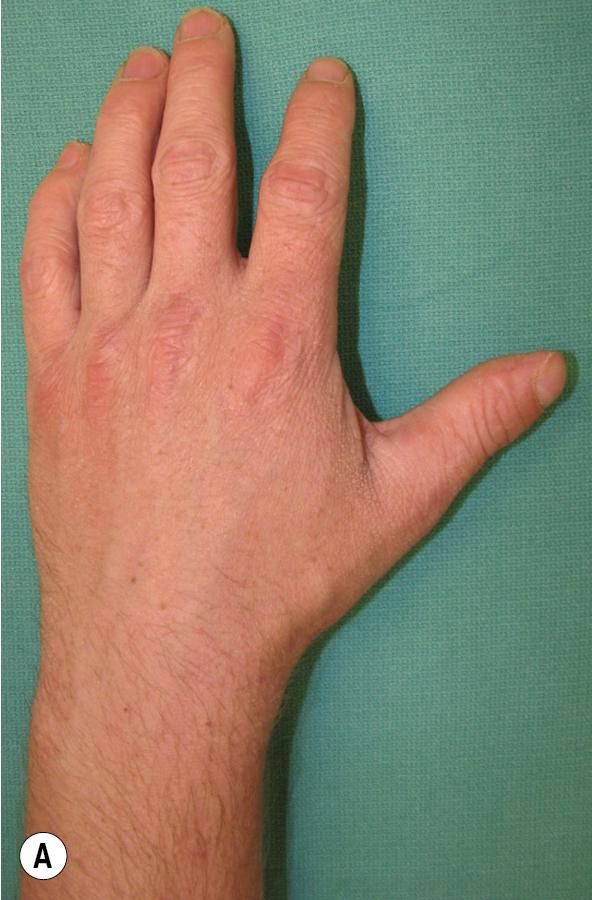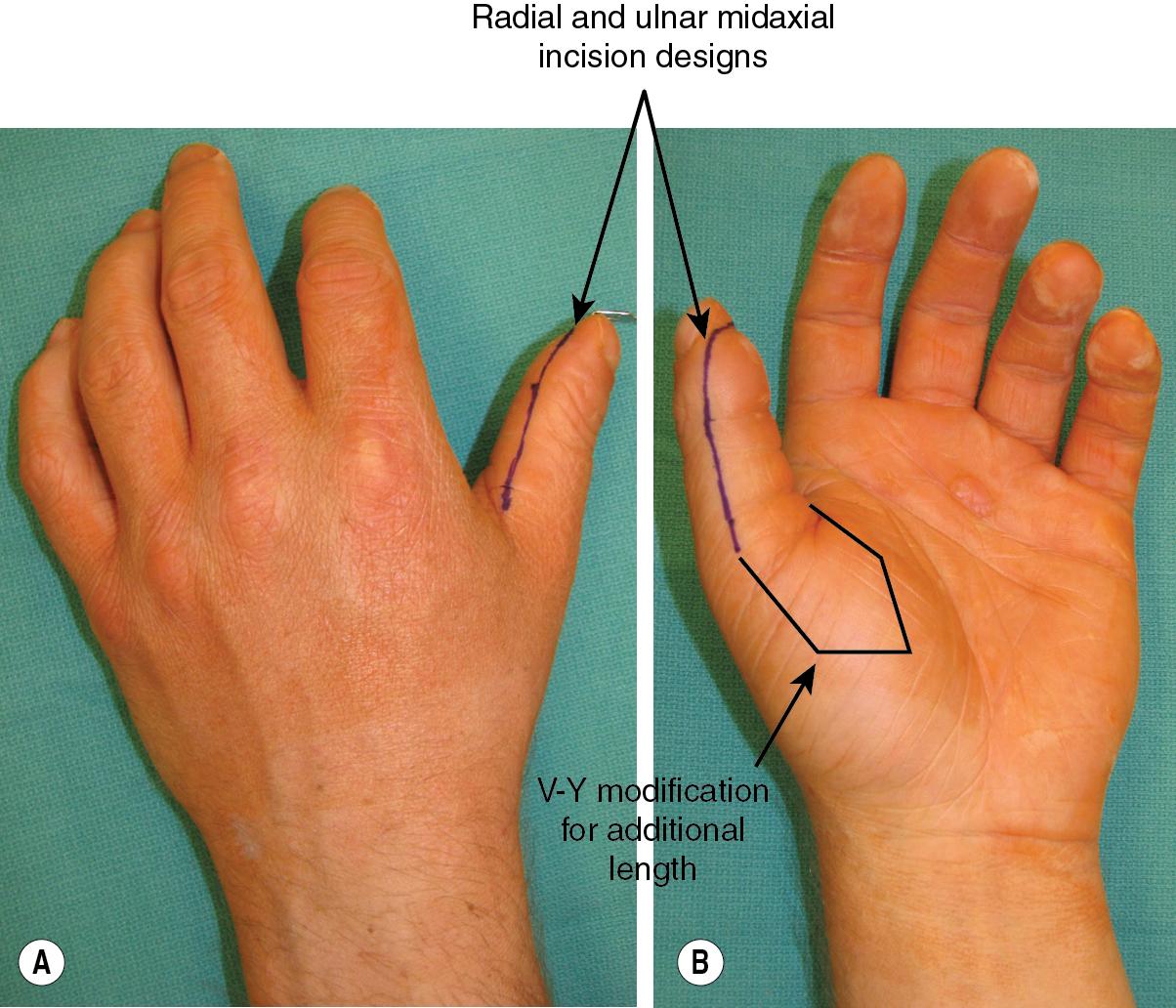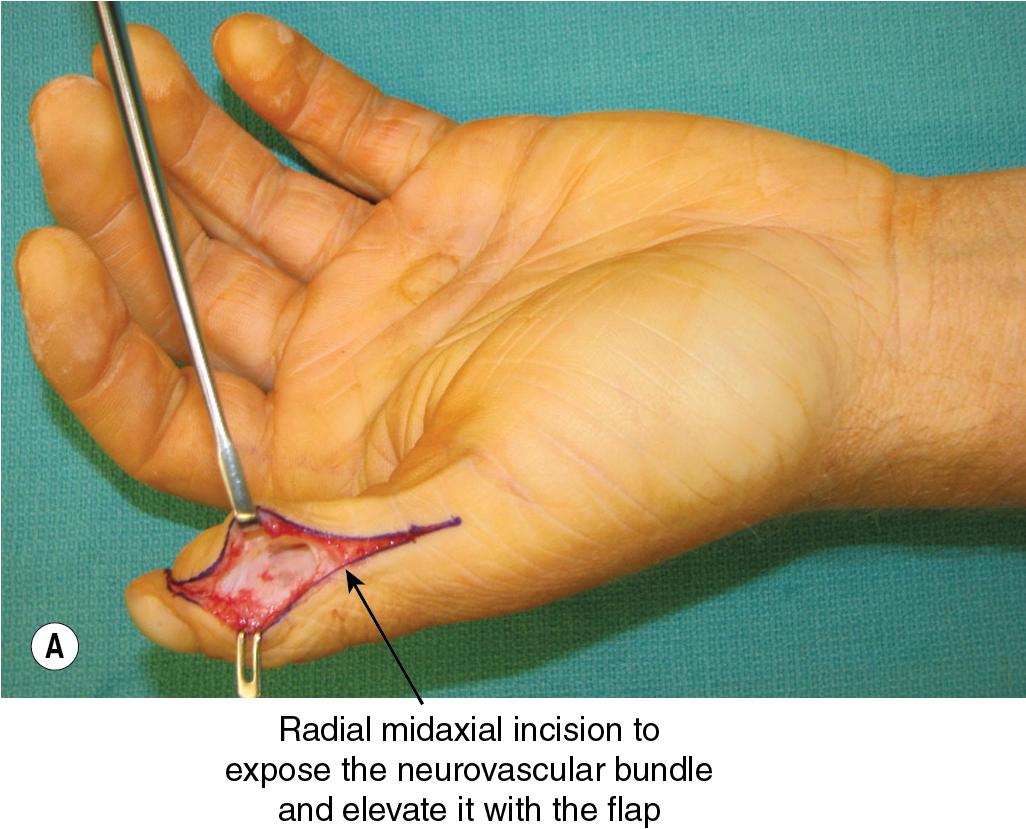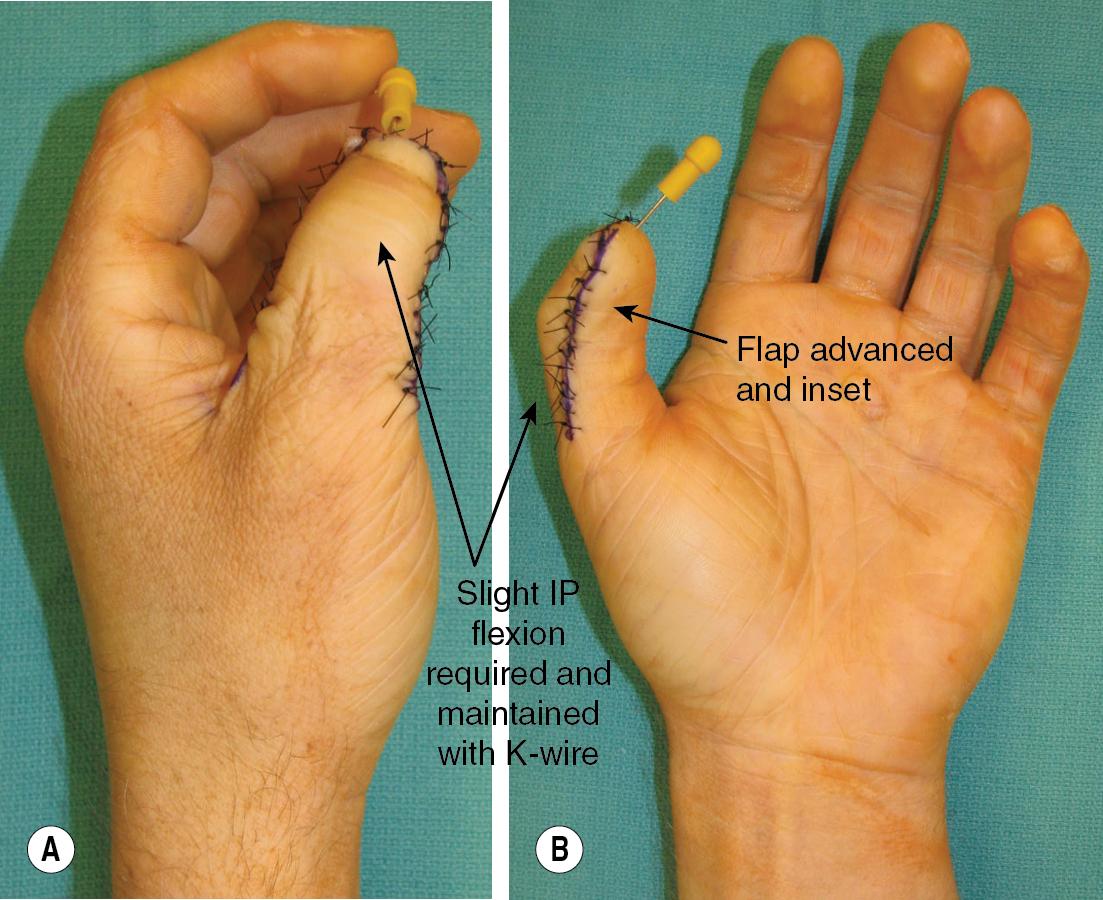Physical Address
304 North Cardinal St.
Dorchester Center, MA 02124
The thumb is an essential part of the hand and plays a key role in power and precision grip, together with the fingers. The major goals of thumb reconstruction vary from patient to patient, but may include maintenance of stability, sensation, length, mobility, and appearance. Exposed structures (tendon, bone, vessels, fat), concomitant injuries to the hand, and defect size dictate the choice of reconstruction. This chapter will present the most commonly used local flaps for thumb coverage including Moberg, first dorsal metacarpal artery, and heterodigital island flaps.
This is a bipedicled advancement flap based on the radial and ulnar digital arteries to the volar thumb skin, designed to provide soft, pliable, and sensate skin to the thumb tip.
Because the dorsal thumb skin has an independent vascular supply arising from the first dorsal interosseous artery, raising this flap will not cause thumb necrosis, unlike in the fingers, which have their sole blood supply deriving from the digital arteries. This flap should not be used for the fingers because flexion contracture in the fingers is not tolerated and there is a lack of independent dorsal finger blood supply.
One indication is the need for sensate, pliable volar thumb distal tip coverage for defects less than 2 cm in size.
Although the Moberg flap is ideally used to cover defects distal to the thumb interphalangeal (IP) joint that are less than 2 cm in size, a V-Y modification of the flap proximally can facilitate additional advancement of the flap distally to cover larger defects ( Fig. 88.1 ).

Typically, the Moberg flap is not used to cover defects greater than 2 cm in size or proximal to the thumb IP joint.
It is also contraindicated if there is injury to the radial or ulnar digital vessels of the volar thumb or injury to the dorsal thumb skin vascular supply that increases the risk for thumb dorsal skin necrosis.
Examine the wound for signs of infection and ensure adequate debridement before flap elevation and inset.
Examine the dorsal hand for lacerations that may place the dorsal thumb skin at risk for devascularization if the flap is elevated.
The hand receives its vascular supply from the radial and ulnar arteries, which combine to form the deep and superficial arches. Specific to the thumb, the radial artery gives off the princeps pollicis artery, which subsequently divides into the radial and ulnar digital arteries of the thumb.
The Moberg flap is a bipedicled flap raised on the radial and ulnar digital arteries to the volar thumb skin. The arteries are accompanied by the proper digital nerves and run along the radial and ulnar side of the flexor tendon sheath. The nerves typically run volar to the vasculature.
Unique to the thumb, there is an independent dorsal blood supply that is derived from the first dorsal interosseous artery branches; this facilitates elevation of this flap without the significant risk for dorsal skin necrosis that occurs with other digits of the hand.
The procedure is performed under regional anesthesia with upper arm tourniquet.
Consider use of a lead hand to hold the thumb in a hypersupinated position.
The flap is designed along the radial and ulnar midaxial lines of the thumb and extends proximally to the metacarpophalangeal (MCP) flexion crease ( Fig. 88.2 ). In certain cases where additional mobility is required, the flap may be extended proximally over the thenar crease to create a V-Y advancement proximally.

To identify the midaxis, place the thumb into flexion and place a dot along the apexes of the MCP and IP skin volar skin creases. Straighten the thumb and connect the dots longitudinally. This will form the midaxial line.
Incise the skin at full thickness along the radial side of the flap first and identify the Cleland ligament, which is dorsal to the neurovascular bundle ( Fig. 88.3 ). The plane of dissection is just above this. Elevate the neurovascular bundle with the flap from the distal to proximal direction.

Dissect perpendicular to the tissue straight down through the skin to the depth of the Cleland ligament, rather than beveling. Beveling (oblique dissection) risks injury to the neurovascular bundle supply to the flap.
Once the radial side neurovascular bundle is identified, the dissection continues across the tendon sheath toward the ulnar side to identify the ulnar neurovascular bundle. Once the ulnar neurovascular bundle (NVB) is identified, the flap can be elevated from distal to proximal off the flexor pollicis longus tendon sheath (see Fig. 88.3 ).
Once the flap is adequately mobilized, let the tourniquet down and evaluate perfusion.
Check that the flap can be adequately advanced, first with the thumb in extension. Flex the thumb IP joint as needed to adequately advance the flap to cover the distal tip.
The flap is inset with interrupted 4-0 or 5-0 nylon sutures (consider chromic sutures in pediatric patients).
Put more tension on the proximal flap, which is well vascularized, to facilitate equal tension distribution across the flap. Closure may start proximally by “pushing the flap” toward the distal end so that the distal portion of the flap sits over the defect and is sutured without any tension ( Fig. 88.4 ).

To advance the flap without excessive IP flexion, a V-Y advancement can be designed proximally onto the thenar eminence because this provides additional mobility to the flap. The resulting defect is closed in a V-Y fashion. This permits primary closure of the flap distally without need for IP joint flexion.
Minimal trimming of the distal phalanx can be performed if excessive tension exists. The nail bed should be trimmed minimally to avoid a hook nail deformity.
The thumb is placed in a dorsal-blocking thumb spica splint for 5 to 7 days, then transitioned to a removable plastic orthosis.
Sutures are removed and gentle active range-of-motion (ROM) exercises are initiated at 2 weeks.
Delayed wound healing at the tip is possible if there is excess tension and should be managed with dressing changes.
In older patients with arthritis, thumb IP stiffness is possible if excessive flexion is required for flap inset.
This flap provides a well-shaped, pliable, sensate reconstruction of the thumb tip.
Become a Clinical Tree membership for Full access and enjoy Unlimited articles
If you are a member. Log in here